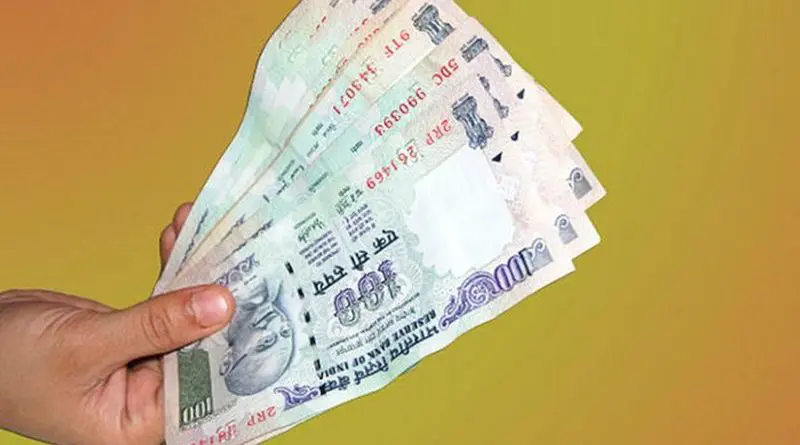India’s Military Modernization: Trapped In Fiscal Strait Jacket – Analysis
By C Uday Bhaskar
The nation budget was presented by Finance Minister Arun Jaitley on February 1 and the allocation for defence offers some instructive insights about how India plans to nurture its military – that is the three armed forces: the army, navy and air force.
The total allocation for the financial year (FY) 2017-18 is a reasonable Rs 3,59,854 crore ($53 billion) and the increase over the last three years has been steady. In FY 2015-16, the total defence allocation was Rs 2,94,320 crores and while this increase of Rs. 65,534 crore is seemingly large – almost 23 percent over a three-year period — the larger fiscal context provides some anomalous insights.
The Indian defence budget is trapped in a strait-jacket which has four structural constraints that impede significant capacity creation and inventory modernisation. These four strands are the declining ratio between defence expenditure (DE) in relation to GDP; the steady rise in the revenue component of the DE — which caters only to the standing costs of a 1.3 million-plus military; the under-utlisation of the allocated funds — particularly in the capital component of the DE which caters to acquisition and modernization; and finally the relative decline of the Indian rupee in relation to the US dollar, which results in shrinking buying power in the global arms market.
Strand 1: From FY to 2015-16 to the current fiscsl 2017-18, the total defence allocation has increased from Rs 2,94,320 to Rs 3,45,106 and now Rs 3,59,854. However as a ratio of DE to GDP it has varied as follows: 2.15 per cent to 2.29 per cent and now 2.14 per cent.
Strand 2: The revenue component for any standing military of a million plus will invariably be substantial and the more recent pay and allowance and pension outflows have been relatively high. To its credit, the Narendra Modi government, despite some initial hesitation, has moved to resolve a long festering issue for the Indian soldier — that of restoring pensioner benefits for the retired personnel. This was peremptorily withdrawn by the Indira Gandhi government almost 40 years ago and successive governments remained indifferent to this injustice.
Due to the partial redress of the one-rank-one-pension (OROP) scheme, the revenue outflow of the DE has shown a sharp increase and this will be a recurring cost. Consequently, the revenue to capital ratio has shrunk to the detriment of the latter and the pension graph is illustrative. Over the same four-year period, the pension bill for the Ministry of Defence (MoD) has moved from Rs 60,238 crore to Rs 85,740 crore — the current figure.
The net result of this fiscal allocation is that the revenue to capital ratio after excluding the pension bill (which is for all the civilian and uniformed personnel administered by the MoD) is becoming more slanted towards revenue or standing costs. The ratio of revenue to capital in 2015-16 was 64.6 to 35.4 percent. In the budgeted estimate for 2017-18 it has skewed to 68.4 to 31.6 percent. This trend is likely to become more pronounced over the next few years as the government moves to provide to the soldier what is currently being paid to the civilian central government employee by way of pay/allowances and promotions.
Strand 3 : This is the more alarming — by way of the impact of under-utilisation of funds allocated towards acquisition and modernization. The inventory gaps in the Indian military are YUGE (to use a Trump expression!). One statistic is revealing. In FY 2015-16, the MoD returned more than Rs. 13,000 crore from the capital head as unspent. In 2016-17, the unspent amount is closer to Rs. 7,000 crore and this is a less than flattering reflection of the competence of fiscal planning and management within the MoD.
Strand 4: India is among the top arms importers of the world by way of foreign exchange spent and the current financial arrangements have led to a situation where the greater part of the capital head is pre-committed over a five- to ten- year period; meaning that inventory acquired is paid in annual amounts.
The Indian rupee has weakened considerably over the last three years. In February 2015 it was Rs 61.63 to the $ and it is now Rs 67.4. Thus the double-whammy is that the rate of induction of new inventory by the Indian military is impaired by both under-utilisation and a weakening rupee.
If these structural constraints are not holistically addressed, the modernisation of the Indian military will be trapped in a fiscal strait-jacket.
*C Uday Bhaskar is Director, Society for Policy Studies. He can be contacted at [email protected]

